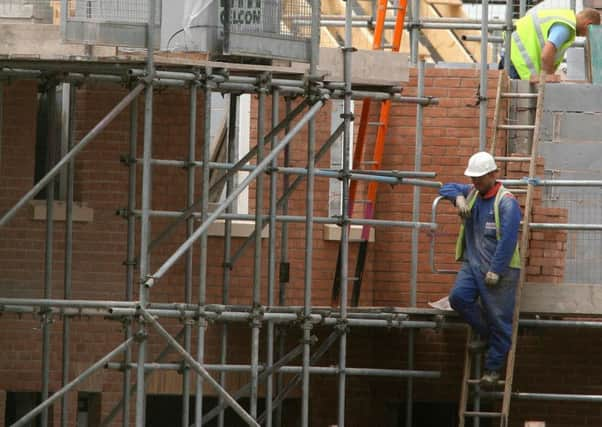Five year Yorkshire property forecast


It’s that time of year when industry experts use a combination of facts, data and crystal ball gazing to predict the future of the property market.
Savills residential forecast, seen as one of the most reliable, says that average UK house prices will remain static next year, while in Yorkshire they will fall by two per cent. In 2018, Yorkshire values are expected to increase by 1.5 per cent followed by a mini boom of five per cent in 2019, which will outperform London’s 4.5 per cent growth. Values are expected to rise by approximately 2.5 per cent per year in both 2020 and 2021.
Advertisement
Hide AdAdvertisement
Hide AdThis adds up to an average 10 per cent rise in house prices over the next five years, compared to a UK average of 13 per cent and London’s 11 per cent, while rents are forecast to increase by 13.5 per cent.
Growth in Yorkshire looks set to be fuelled by a shortage of housing and a growing population created by strong economic growth in what Savills refers to as the “Leeds region”. The firm classes this as Leeds, Barnsley, Bradford, Calderdale, Craven, Harrogate, Kirklees, Selby, Wakefield and York.
The population in these areas has grown by 3.1 per cent since 2011 and Oxford Economics believe there will be a further 2.4 per cent increase over the next five years. This equates to 73,000 people.
Savills Spotlight: Leeds Cross Sector report says that 14,900 new homes a year are needed in these locations but in 2014-15 only 7,310 were built, resulting in a shortfall of 7,500. It adds that there is a desperate need for new residential development sites, especially in Leeds and Bradford.
Advertisement
Hide AdAdvertisement
Hide AdResearchers predict a potential housing shortfall of 30,000 homes by 2021, driven by an increase in population related to jobs growth and high student retention.
A lack of housing supply has already helped push up average house values, which are close to or level with their 2008 peak, with some hotspots outperforming this. York is now 14 per cent above its 2008 peak with average values of £231,700, while Leeds is three per cent above with average values of £165,600.
Matthew Jones, development director at Savills, says: “House building was damaged by the 2008 recession and although delivery has steadily recovered since 2012, there is now an urgent need for residential development sites to be brought forward. The issue is exacerbated by greenbelt constraints and the cost of major regeneration schemes. It is therefore vital that local authorities across the region work together to meet the housing demand created by the growing economy.”
Paul Fairhurst, head of Savills Leeds, adds that the demand for more housing must be addressed if Leeds is to continue to attract inward investment.
Advertisement
Hide AdAdvertisement
Hide AdThe report highlights emerging development hotspots, including Wakefield, which it says is well positioned to absorb the overspill of demand from other areas, thanks to its accessibility and availability of land for housing development.
In Kirklees, Dewsbury Riverside has been allocated over 2,500 new homes in the Draft Local Plan. New settlements of over 3,000 properties are proposed at Whinthorpe and Clifton Moor, while Harrogate Council is consulting on where a new major settlement will be.
With over 36 hectares of brownfield space potentially available for development and advanced plans for the HS2 station, Savills says there are major opportunities for mixed use developments on Leeds’ South Bank.
East Leeds Orbital Road, which is set to be completed by 2021, could unlock a major housing development adjoining Swarcliffe and Whinmoor. Alongside a new rail station, the Orbital Road will also enable further development at Thorpe Park, including 300 new homes and over 1.3m sq ft of office, retail and leisure space
Advertisement
Hide AdAdvertisement
Hide AdSavills add that 72-hectare York Central, York’s largest brownfield site, between the railway station and Water End, will offer a minimum of 480 homes and up to 800,000 sq ft of office space. This should help address the acute, and growing shortage of high quality office space and homes.